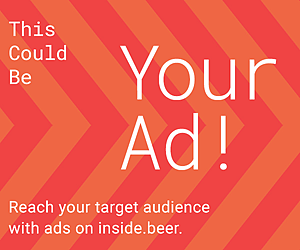The market for non-alcoholic beverages is booming in the United States, with sales soaring 26% over the past year to exceed USD 800 million, according to NIQ. This trend is highlighted by Michelob Ultra Zero, which will feature prominently in a high-profile Super Bowl commercial, marking another milestone for the alcohol-free beer sector. The ad, set to air during Super Bowl LIX, stars Willem Dafoe, Catherine O’Hara, Sabrina Ionescu, Randy Moss, and Ryan Crouser.
Super Bowl LIX is set to kick off at 6:30 p.m. ET on February 9, 2025, at the Caesars Superdome in New Orleans, featuring a rematch between the Kansas City Chiefs and the Philadelphia Eagles. The Chiefs, led by quarterback Patrick Mahomes, are aiming for an unprecedented third consecutive Super Bowl victory, a feat never before achieved in NFL history. The halftime show will be headlined by Kendrick Lamar, with special guest SZA, and Jon Batiste is slated to perform the national anthem.
The Super Bowl has long been a premier platform for beer advertising, with companies investing heavily in memorable commercials to capture the vast viewership. Anheuser-Busch, in particular, has a storied history of iconic Super Bowl ads. In 1995, their "Budweiser Frogs" commercial, featuring three croaking frogs named "Bud," "Weis," and "Er," became a cultural phenomenon. In 2000, the "Whassup?" campaign, showcasing friends greeting each other with the now-famous phrase, further cemented Budweiser's reputation for impactful advertising. These campaigns not only boosted brand recognition but also became ingrained in popular culture, demonstrating the significant role of the Super Bowl in shaping the beer industry's marketing strategies.
While in the past it was unthinkable to feature a non-alcoholic beer at the Super Bowl, Heineken 0.0 broke the ice in 2023 when it became the first non-alcoholic beer to advertise during the event. Now, the USD 8 million investment by Michelob Ultra Zero per 30-second slot underlines the commitment of major beer companies to this growing segment.
Non-alcoholic beer dominates the zero-proof category, comprising 84% of sales. Brands like Bud Zero, Athletic Brewing, and Heineken 0.0 are leading the charge, capitalizing on evolving consumer habits. Analysts, such as Bernstein’s Nadine Sarwat, attribute this success to advances in brewing technology, which make alcohol-free beer taste strikingly similar to traditional beer. Since beer generally contains only 4%-5% alcohol, its non-alcoholic counterpart can retain much of the original flavor.
Economic pressures and shifting health concerns are driving the movement toward moderation. Alcohol sales dipped slightly—less than 1%—marking the first decline in three years. A Gallup poll found that alcohol consumption among Americans has declined from 67% in 2022 to 58% in 2024, with younger consumers leading the shift. Additionally, a report by the U.S. Surgeon General in January highlighted alcohol as the third leading cause of cancer, attributing 100,000 annual cases and 20,000 deaths to alcohol-related cancers.
Bars are adjusting to these preferences. At Amity Hall, a sports bar in New York City, non-alcoholic beers or mocktails now account for one in every 20 drinks poured. Operations manager James Wells noted a cultural change, especially among younger patrons, NBC News reported.. "People are trying to just have an overall even-keel experience, and I think that that involves sometimes alcohol, sometimes not," he said.
Despite the rising popularity of alcohol-free options, 93% of non-alcoholic drink buyers also purchase alcoholic beverages, indicating that consumers are not necessarily quitting alcohol but rather integrating it into a more balanced lifestyle. The trend, termed "zebra-striping," sees drinkers alternating between alcoholic and non-alcoholic beverages within the same evening.
For beverage giants, this shift presents an opportunity rather than a threat. Non-alcoholic products often carry similar price tags to their alcoholic counterparts but escape alcohol-related excise taxes, enhancing profit margins. As demand for wine stagnates and alcohol sales weaken, companies are more than willing to embrace this lucrative evolution.

